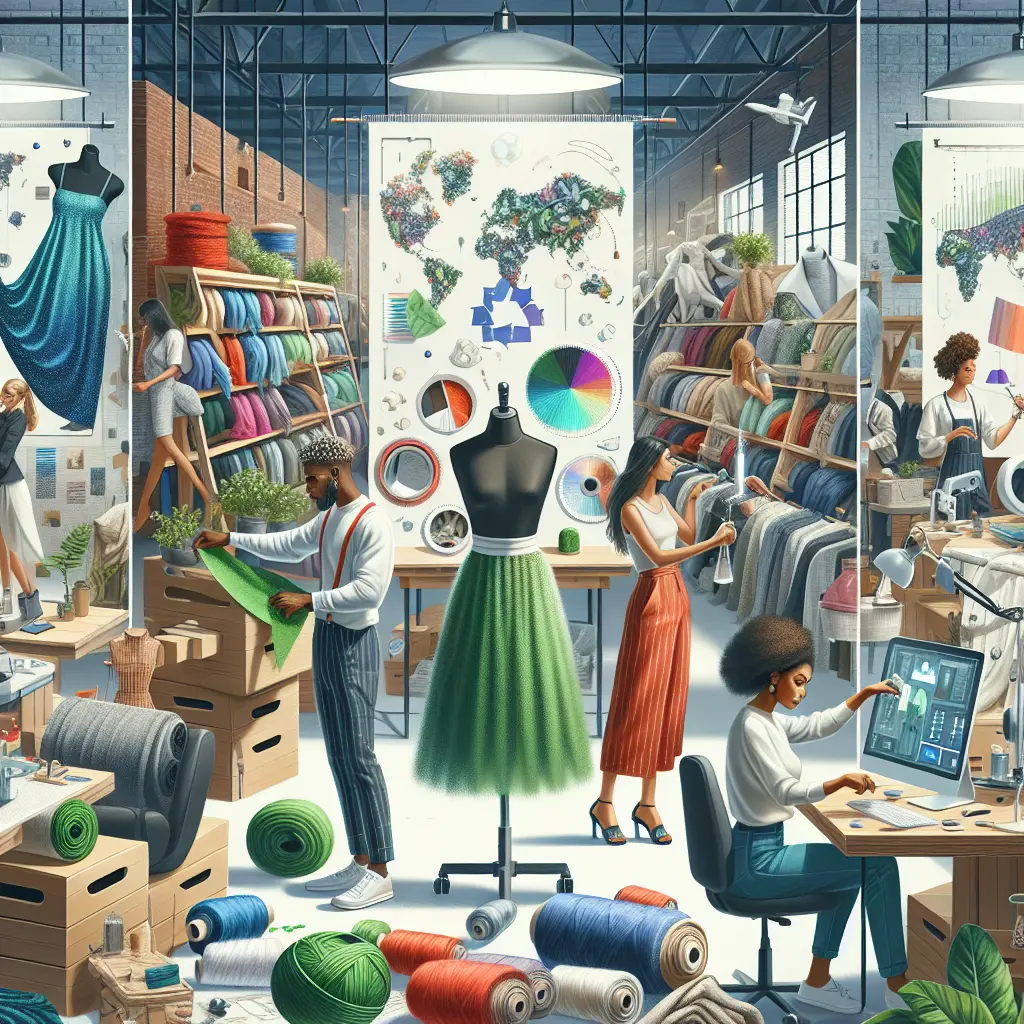
In recent years, the fashion industry has faced an undeniable reckoning—a shift towards sustainability that reshapes how apparel is produced, consumed, and disposed of. Amidst growing environmental concerns, sustainable textile innovations have become the spearhead in transforming eco-friendly fashion from a niche trend to a mainstream imperative.
The Rise of Sustainable Textiles
The concept of sustainable textiles encompasses materials and processes that significantly reduce ecological footprints while conserving energy and natural resources. These green fabrics are pivotal in the development of environmentally friendly apparel, ensuring that the fashion industry aligns with more sustainable practices. The use of renewable fibers, such as organic cotton, hemp, and bamboo, has skyrocketed. These materials not only diminish the usage of harmful pesticides and chemicals but also offer biodegradable solutions that cater to the increasingly popular zero-waste manufacturing ethos.
Innovations in Textile Recycling and Ethical Fashion Trends
One of the most groundbreaking advancements in sustainable fashion innovations is textile recycling. As consumers become more environmentally conscious, the demand for recycled fabrics has surged. This process involves breaking down old garments and other fabric waste to create new textiles, significantly reducing the need for virgin materials and decreasing landfill waste. According to recent studies, recycled fibers can conserve up to 90% of water compared to conventional textile production methods.
Ethical fashion trends further encapsulate the movement towards a more responsible industry. These trends emphasize transparency, fair labor practices, and the humane treatment of workers throughout the supply chain. Ethical fashion also supports local communities by sourcing handmade artisan products, thereby preserving traditional crafts that might otherwise succumb to industrialization.
Circular Fashion Economy and Zero-Waste Manufacturing
The circular fashion economy is a transformative approach aiming to eradicate waste and promote the reuse of resources. Central to this concept is designing products with their end-of-life in mind—facilitating easy disassembly and reintegration into new products. Zero-waste manufacturing complements this by focusing on designing patterns that minimize fabric waste during production.
Brands are increasingly adopting these models to not only reduce environmental impact but also economize by transforming waste into wealth. The adoption of sustainable dyeing techniques, which use fewer chemicals and water than traditional methods, plays a crucial role in this transition, further enhancing the appeal of low-impact textiles.
Technological Advances in Sustainable Fashion
Emerging technologies are also pivotal in propelling sustainable fashion forward. Sustainable fashion technology has introduced innovations such as 3D printing and digital fabric printing, which significantly reduce waste and energy consumption. Furthermore, developments in fabric treatments and finishes have led to more sustainable alternatives that require less frequent washing, thus lowering the overall environmental impact during consumer use.
Recent News Highlighting Sustainable Practices
The fashion industry's pivot towards sustainability is not happening in isolation. Recent events have underscored the urgency and the response from the industry. For instance, Lily Collins' portrayal in 'Emily in Paris' has sparked conversations around sustainable fashion among a younger audience, bridging pop culture with serious environmental discourse. Although not explicitly focused on sustainability, the show's global reach has made it an unexpected catalyst for discussions around eco-friendly lifestyles, including fashion choices.
Moreover, societal unrest and economic challenges in various regions have also highlighted the importance of sustainable practices. A report titled "Bago: Leveraging agriculture to prevent future protests" emphasizes how economic sustainability in agriculture could lead to broader social stability, indirectly impacting industries such as fashion that rely on agricultural products like cotton.
The Role of Consumers
Consumers play a crucial role in driving the shift towards a more sustainable fashion industry. As awareness grows, so does demand for transparent and sustainable practices. Shoppers are increasingly opting for brands that align with their values—those that prioritize not only the aesthetics of apparel but also its environmental and social footprint.
Conclusion
The transformation of the fashion industry through sustainable textile innovations is an ongoing journey. From organic materials in fashion to ethical labor practices and technological advancements, each element contributes to a larger vision of a sustainable future. As we continue to witness these changes, it is imperative for consumers, manufacturers, and policymakers alike to collaborate in fostering an environment where sustainable fashion is not just an option but the norm.
Thank you for joining me on this exploration of how we can all be part of a greener, more ethical fashion world. Here's to making every thread count!
Written with hope and optimism,
Loretta Bishop